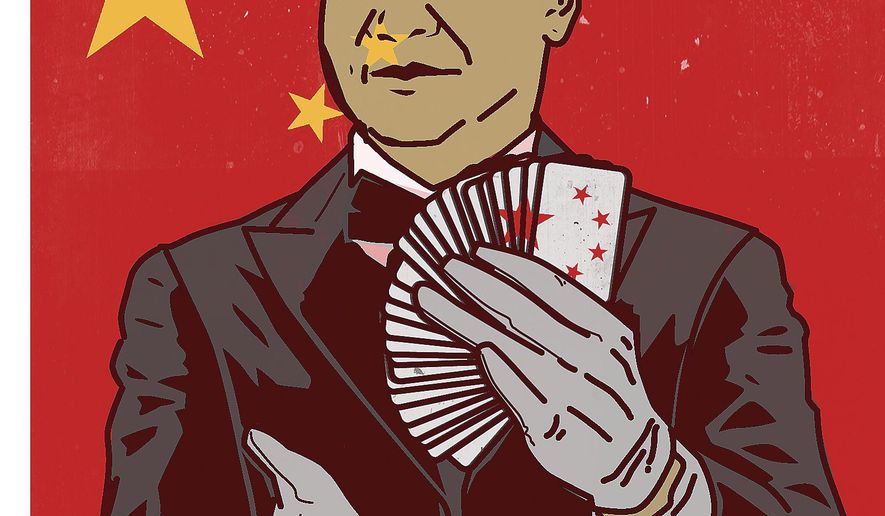OPINION:
As the new year approaches, it is timely to suggest what basic plan the Chinese Communist Party Central Committee would have likely promulgated — possibly in 2012 — when Xi Jinping took over as general secretary. While we lack any “inside information” on what such a plan might look like, it’s possible to suggest an outline based on living, dealing and working with the “modern” Chinese mind-set, a mind-set which is vastly different than that in the West. And, recall what Napoleon said more than 200 years ago: “China is a sleeping lion — let her sleep, for when she wakes she will shake the world.”
China has been “awake” for decades now, beginning after World War II, when the Japanese Empire in Asia ended and the Nationalists fled to Taiwan. Other key events were when the Peoples Republic took the Republic of China’s seat in the United Nations and when the PRC was formally recognized by the U.S. in 1979, largely as a result of President Nixon’s opening of relations with the PRC.
China’s plan — and in this context, it’s important to remember that Mr. Xi holds a Ph.D. in economics from the University of Iowa — would probably have at least three key parts:
• General principles and inside China
• The Pacific region, especially the Korean Peninsula and Japan
• The world — in terms of specific regions and areas of interest
Under “General Principles and inside China,” China is unlike much of the Western world and regards its own internal governance and dynamic much as it deals with foreign affairs, enabling the Central Committee to manage, oppress, infiltrate and eliminate the many and various Chinese minorities, ethnic and religious groups. They have repeatedly done this in Tibet and with the Uyghurs who practice the Muslim religion. Yet the Chinese support Muslim unrest in other parts of the world — if it’s aimed at the United States.
Likewise, China stresses the critical importance of collecting and reporting all categories of information as a requirement for financial status, advancement, travel and family opportunities. The external manifestation of this basic concept has long existed with millions of “overseas Chinese” who are not allowed to travel and remain outside of China unless they collect and report relevant information, creating the largest intelligence operation in history.
Developing the Chinese economy is also a key part of the “General Principles” — and expresses China’s rejection of any Western legal concepts of intellectual property, patent, trademark, and any system therefor. Theft of technology and intellectual property has never been regarded as “stealing” in China and never will be.
The “Pacific Region” part of China’s plan focuses on three main themes: Keeping the United States out of their sphere while minimizing the economic influence of both Japan and South Korea. At the same time China supports the transformation of North Korea into a mini-China with state-controlled wealth, largely by the North’s accretion of the successful commercialism in the South. China also supports the Kim regime in its goal to absorb the South and eliminate U.S. military presence there.
The militarization of the South China Sea and the construction of artificial island fortifications is also part of this plan, which will include increasingly aggressive and confrontational behavior — eventually requiring transiting commercial ships to pay tolls to avoid military challenge.
The “World” part of China’s plan is largely focused on the United States and reflects a basic internal conflict — that China will fail economically if access to U.S. markets is limited, although the longer-term goal is to displace the United States and the world’s largest economy and the dollar as the world’s currency. China’s long-term focus in South America and Africa will continue as will exploitation of space for military and commercial advantage.
High technology from China is perceived primarily as a means to embed hardware and software that enable worldwide information collection and data mining. China will soon have its own Internet, but with restricted, monitored and heavily regulated access to the “real” Internet. Chinese information operations in the worldwide Internet will be indistinguishable from the “real” news, borrowing from the success of the Russian “RT” model.
To divert these Chinese plans will require both open and aggressive covert efforts, requiring major U.S. expenditures at home and worldwide. Included here are better relations with Pakistan, the main supplier of nuclear weapons technology to North Korea. Clearly China could shut down Mr. Kim’s nuclear programs easily if it chose to — but elects not to because it sees the conflict as leverage in reducing U.S. regional influence. An Australian decision to “go nuclear” could change all this and this may happen when it becomes clear — yet again — that Mr. Kim has no intention of getting rid of his nukes.
Bottom line: The central theme in China’s policy of worldwide influence is based on the joint themes of centralized control and deception — and there’s nothing new about this in China. For China, it’s always been a war with the West and always will be — as Sun Tzu said: “The supreme art of war is to subdue the enemy without fighting. All warfare is based on deception.”
• Daniel Gallington and Abraham Wagner served in senior national security positions.




Please read our comment policy before commenting.